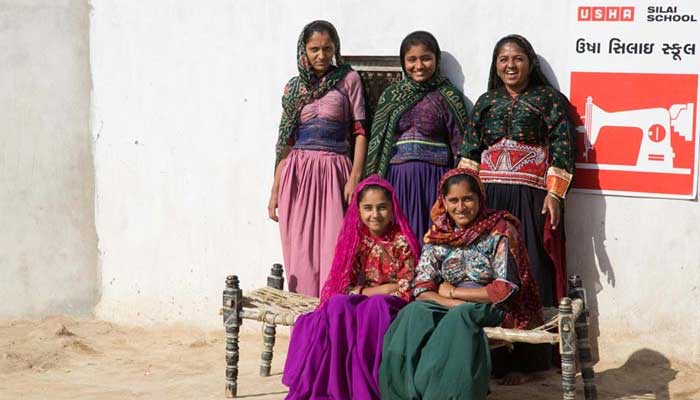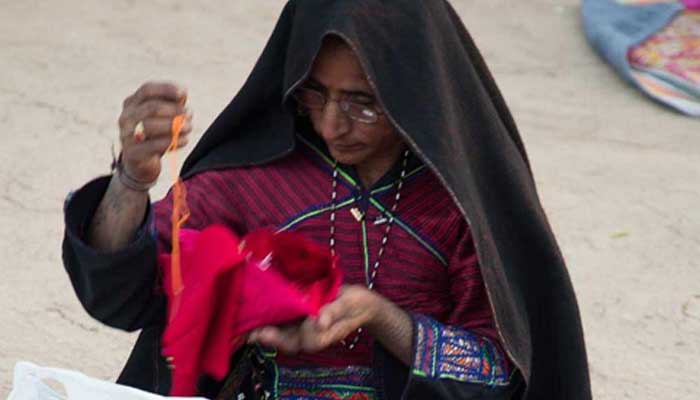- Home/
- Usha Training Center Empowering Women With Skills And Economic Growth In Meghalaya's Mawlynnong
Usha Training Center Empowering Women With Skills And Economic Growth In Meghalaya's Mawlynnong

Nestled in the heart of Meghalaya, the village of Mawlynnong, has earned several titles - "God's Own Garden" for its breathtaking beauty, and "Asia's cleanest village" for its impeccable cleanliness. But Mawlynnong has plenty more to its credit. Mawlynnong boasts a high literacy rate and opportunities for women's empowerment, making it a multifaceted gem in northeast India. Situated 72 kilometers from the capital city of Shillong, Mawlynnong lies amid lush fruit orchards, babbling streams, swaying palms, and an expanse of greenery that stretches as far as the eye can see. These sylvan surroundings provide the perfect backdrop for the well-preserved Khasi traditions of the village.
Mawlynnong gained international recognition in 2003 by Discovery Magazine which crowned it as Asia's Cleanest Village. The people of Mawlynnong are very particular about keeping their village clean, even the dry leaves are disposed of in compost pits.
However, the women of Mawlinnong are not only solely dedicated to cleanliness. The USHA x TRAINING CUM PRODUCTION CENTER (TPC) is empowering local women in many different ways. In this center, the women gather after their morning chores, to acquire skills in cutting, measuring, stitching, and crafting finished products such as bags, pillow covers, and home decor items. These items find their way to local markets and hold the potential for exports to other nations, given the substantial tourist traffic in the region.
Sylvia Khonbunphang, a homemaker residing in Mawlynnong village, enrolled herself for the training to enhance her existing sewing skills and learn new things. She said,
By coming here, I learned many new skills, including measurements, designing bags, making kurta, blouse, and pants. If we forget any measurement or procedure, we discuss among ourselves many ideas of stitching and what should be done and what shouldn't.
The Usha Training Cum Production Center in Mawlynnong was established only eight months ago. The first batch of five women is nearing completion of their training, and the skills they have acquired have opened up new avenues for them.
Expressing his eagerness for more women to benefit from this training, Thomlin Khongthohrem, the headman of the village, said,
This training center is a positive sign. Recently, bags made here were sold to tourists and visitors, introducing a new design even for the villagers and bringing further benefit to the village.
Those coordinating the training on the ground also believe that the women of Mawlynnong can become empowered changemakers in their community if provided with the right tools and support.
Kishore Kalita, Program Coordinator, at Usha Silai School, said,
The women of this area are very interested in acquiring skills to create products for the local market. Usha has intervened and bridged this gap by establishing a TCP center here, supporting with machinery. We have provided 10 machines and trained around five women. This Training Cum Production center aims to not only impart skills but also create a ripple effect as trained individuals go on to train more people in the community.
It's the first of its kind in Mawlynnong, which had no tailor shop where residents could go and stitch something.
also read
Threads Of Courage: Usha Silai School's Kushalta Ke Kadam Weaves Dreams Into Reality
Team NDTVStitching New Beginnings: How Usha Silai Schools Transformed Three Women's Lives
Written by Team NDTVUSHA x NDTV: From Uttar Pradesh To Bihar, Corporate Partnerships Drive Financial Freedom For Rural Women
Team NDTV
Related Stories
More- Team NDTV | Wednesday January 07, 2026
From Madhya Pradesh's stigma to Bihar's child marriages, Usha Silai School's NDTV-backed Kushalta Ke Kadam empowers women like Kalpana and Shabnam to stitch dignity and self-reliance
- Written by Team NDTV | Friday January 02, 2026
Usha Silai Schools give second chances to women like Srinagar's Marifat, who rebuilt after widowhood; Madhya Pradesh's Jyoti, escaping abuse to run her own center; and Rajasthan's Vimla, rising from child marriage to tailor and teacher. Through nine-day training, they gain sewing skills, confidence, and income proving one stitch mends lives and inspires communities.
- Team NDTV | Friday December 26, 2025
A new wave of corporate-community partnerships is equipping rural women with skills, income and confidence
- Written by Team NDTV | Friday December 12, 2025
USHAs Silai School Programme empowers women across India by turning sewing into independence. Women become trainers and leaders, transforming their lives and communities through skills, confidence, and income
Adopt a Silai School
About the Initiative

Kushalta Ke Kadam, an initiative by USHA Silai School and NDTV has entered its eighth season. The aim is to empower more women across rural India by teaching them sewing skills and helping them open new doors of opportunities for themselves. The initiative encourages rural women to become financially independent and entrepreneurs by taking up sewing and training others in their respective communities.
Since 2011, the USHA Silai School initiative has trained more than 12 lakh rural women through over 33,000 Silai schools, spanning over 20,751 villages across India.
The women earn Rs. 4,000 – 5,000 per month on an average, with the highest recorded monthly earning being Rs. 84,000 in a month. This earning works as a catalyst towards building their self-confidence, reducing gender inequities, and raising their stature within their families and in society at large.
In Pics

Rebari girls grow up learning traditional embroidery, which along with their new found sewing skills developed at Usha Silai Schools, is helping them earn a living.

Usha Silai School has empowered many rural women to support their family and send their children to school.

The Usha Silai School, established in a small nondescript village that goes by the name of Kottai, is helping empower people from varied communities.

The all-inclusive Usha Silai School Programme covers the entire nation from hamlets tucked between hills to villages cast by the sea.

Vegetables farmers from the Mizoram hills earn very little given the topography of the area. Usha Silai Schools have played an important part in this region by skilling women to financially contribute towards their households.

Usha Silai School learner Lucy has trained seven other women in her community, helping them to become financially independent.

Women like Kaviben from the nomadic Rebari community are finally laying down their roots as they begin to gain financial independence and thereby stability through Usha Silai School.

Usha Silai School, located in the Gujarat's Bhuj village, is enabling rural women to earn as much as Rs. 2,500-4,000 each month.

Usha Silai School, in association with a Gujarat based NGO called Kala Raksha, is trying to bring about a Silai revolution in Bhuj.

Besides training other women from their community, many Usha Silai School learners have become entrepreneurs in their own right.

With sewing becoming easily accessible and lucrative, the silai schools are also helping revive traditional motifs and designs.






